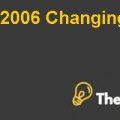
Introduction
This case focuses on the Computerized Provider Order Entry (CPOE) system at Emory Healthcare. First, I will discuss the history and environment of Emory Healthcare. Then I will discuss the implementation of the CPOE system, followed by the problems faced by Emory Healthcare regarding the implementation of this system. Lastly, I will provide some recommendations for Emory Healthcare concerning the CPOE systems.
Emory Healthcare was established over 100 years ago. By 2009, it was the biggest group practice in Georgia. Through the years, Emory Healthcare has partnered together with different organizations in order to implement different information systems in the organization. Prior to the implementation of CPOE, physicians placed orders by filling out an order sheet and then they were verified by the nurses. The CPOE order entry system was intended to lessen or reduce the unwanted paper requests.
The motivation behind CPOE frameworks is to diminish or purge manually written requests that are placed by physicians for patients and give decision support. With increasing requirements of quality of care and regulatory pressures, the evidence recommended that CPOE will play a significant part in increasing the quality of care; however, adjusting the need of CPOE and its effect on current medical processes at Emory Healthcare is complicated.
Summary of Issues
CPOE systems can lead to different kinds of errors that do not occur typically when ordering is done by paper. Despite the benefits, the dramatic change in processes was met with mixed reactions from both physicians and nurses. Some physicians believed that the system did not improve the quality of care and could only be utilized if the user was computer savvy while some nurses believed that CPOE created a new workplace dynamic in which responsibility for order entry was not always clearly defined and there was an unfair shift in workload from nurses to physicians.
There was some organizational skepticism amongst providers about how effective the CPOE system would prove to be in the terms of improving patient care. Dr. Matthews indicated that CPOE was not a cure-all for eliminating medical errors. Some nurses felt that the system was needlessly complex and cumbersome to use. Due to the lack of confidence that patient care would be improved, some providers found ways to work around their direct interfacing with the CPOE system without bypassing the system altogether.
The training program was considered adequate but only three-hour training session for doctors did not give formal exposure to the system and they were not individualized to accommodate the speeds of different user’s learning.
The biggest problem with the implementation of the system was the change in the required medication reconciliation. Many physicians found the medication reconciliation counter-intuitive and frustrating due to which many of them stopped performing the reconciliation because the COPE system’s medication reconciliation was redundant and difficult to use.
There were other problems with the system as well, when patients were transferred from one department to another within the hospital, their orders may not be transferred with them. In addition, under the old system, unit clerks would act as what was referred to as a 'gatekeeper' with regards to new orders provided by physicians and administered by nurses. The only way for nurses to know about new patient orders was to log in to the CPOE system.....................
This is just a sample partial case solution. Please place the order on the website to order your own originally done case solution.












